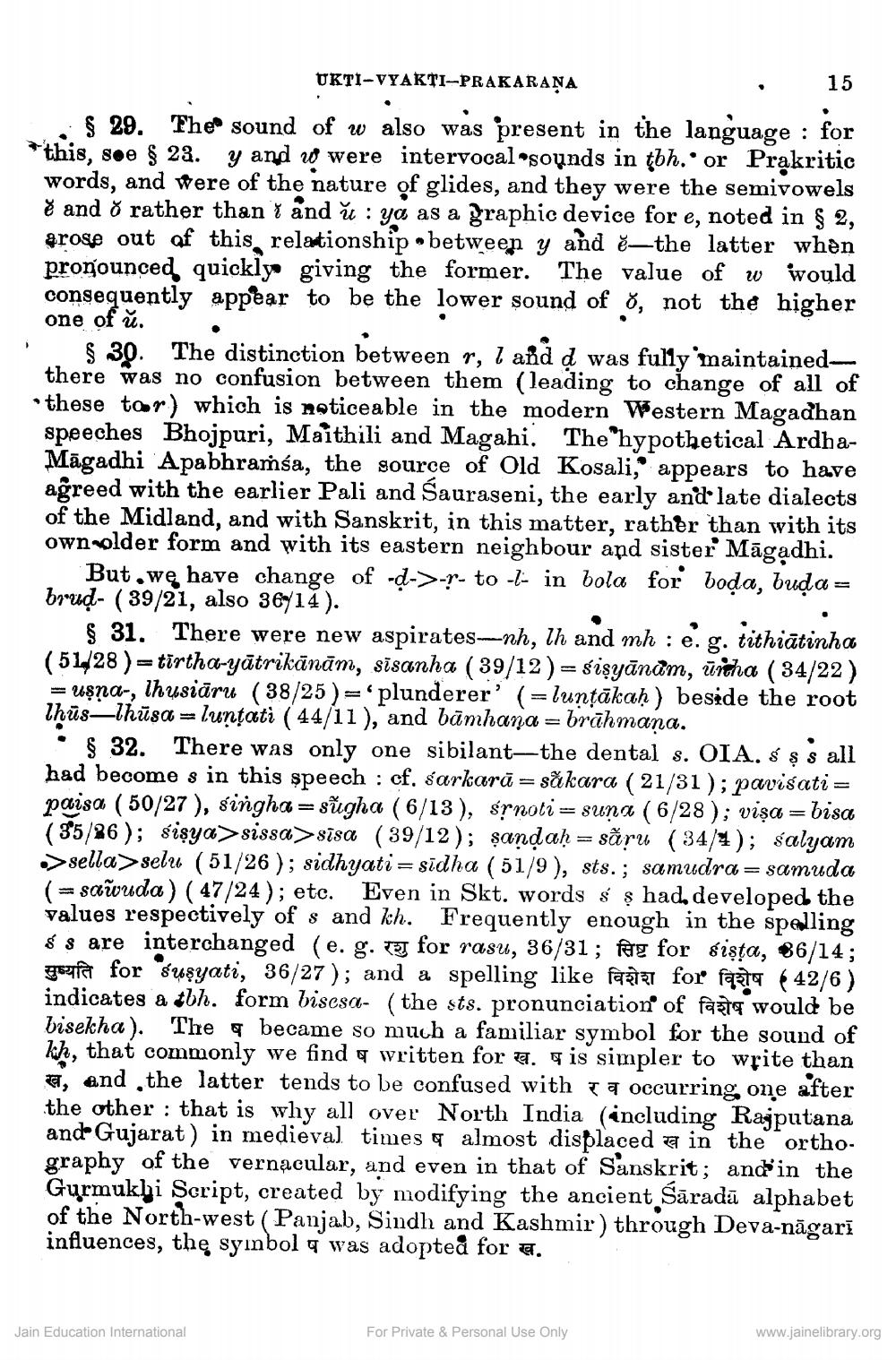________________
UKTI-VYAKTI-PRAKARANA
.
15
i § 29. The sound of w also was present in the language : for *this, soe $ 22. y and w were intervocal-sounds in tbh..or Prakritic words, and were of the nature of glides, and they were the semivowels • and 7 rather than r and it : yo as a graphic device for e, noted in § 2, erose out of this relationship between y and ē—the latter when pronounced quickly giving the former. The value of w would consequently appear to be the lower sound of Ở, not the higher one of ŭ.
§ 30. The distinction between r, I and d was fully maintained there was no confusion between them (leading to change of all of these tour) which is noticeable in the modern Western Magadhan speeches Bhojpuri, Maithili and Magahi. The hypothetical ArdhaMāgadhi Apabhramśa, the source of Old Kosali," appears to have agreed with the earlier Pali and Sauraseni, the early and late dialects of the Midland, and with Sanskrit, in this matter, rather than with its own older form and with its eastern neighbour and sister Māgạdhi.
But we have change of -->-r- to -l- in bola for boda, buda = brud- (39/21, also 36/17).
§ 31. There were new aspirates-nh, lh and mh : e. g. tithiātinha (51/28)= tirtha-yātrikānām, sīsanha (39/12 ) = sisyānam, ūitha ( 34/22) = usna-, lhysiāru (38/25 ) = plunderer' (=lunţākaḥ) beside the root lhüs—hūsa = lunțati ( 44/11), and bāmhana = brāhmana.
. $ 32. There was only one sibilant—the dental s. OIA. $ ss all had become s in this speech : cf, sarkarā= săkara ( 21/31 ); pavisati = paisa ( 50/27 ), singha = săugha (6/13), srnoti = suna (6/28); viņa =bisa ( 35/26 ); sięya> sissa> sisa (39/12); şandaḥ= săru (34/4); salyam ->sella> selu (51/26 ); sidhyati = sidha (51/9), sts.; samudra= samuda (= sawuda ) ( 47/24); etc. Even in Skt. words s ș had, developed the values respectively of s and kh. Frequently enough in the spelling ś s are interchanged (e. g. u for rasu, 36/31; fe for sişța, 86/14; gefa for syşyati, 36/27); and a spelling like fakt for fasta ( 42/6) indicates a tbh. form biscsa- (the sts. pronunciation of faste would be bisekha). The q became so much a familiar symbol for the sound of kh, that commonly we find a written for a. is simpler to write than
, and the latter tends to be confused with Ta occurring one after the other : that is why all over North India (including Rajputana and- Gujarat) in medieval times q almost displaced a in the orthography of the vernacular, and even in that of Sanskrit; and in the Gurmukhi Script, created by modifying the ancient Sāradā alphabet of the North-west ( Panjab, Sindh and Kashmir) through Deva-nāgarī influences, the syinbol q was adopted for a.
Jain Education International
For Private & Personal Use Only
www.jainelibrary.org




